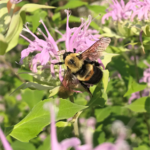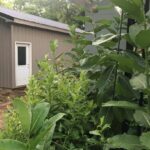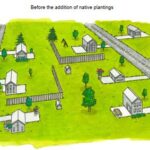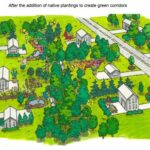By Liz Neroni, Naturalist

When looking at Delaware county from above on a map, you can see our parks. Little green islands amongst the never-ending development. It seems like every day here; more and more houses appear. This type of growth isn’t necessarily a bad thing. We need places to live. Yet, the habitat we destroy in order to accomplish this, is nothing less than devastating.
The good news is there’s a way to find balance. We can live with nature and continue to grow. There is an answer! Something that each person can participate in, especially homeowners. Yet, as a naturalist and a homeowner, it seems like an impossible task.
I spent 2020 reading and watching documentaries. Each one exposed the same truth. We are in trouble, this planet is in trouble, and it’s 100% human caused. So, the first time I heard the answer, I thought it was too simple, yet clear. I almost didn’t believe it but believed it so strongly it dug into my core. I started my journey, and I was already seeing positive results. Yet, I still struggle to pass along the solution I have learned. I could scream from the rooftops, write blogs, post on social media, suggest resources, and the importance of this answer could still be lost. What makes it seem so impossible, is that people must believe, actually change, and have the means to do it.

Here it is. We MUST remove turf from our yards and begin planting Ohio NATIVE plants. We must fill in the gaps between green park islands by adding these trees, shrubs, grasses, and wildflowers to our own properties. We need to replace the habitat that was destroyed in the space surrounding our homes. It is essential that we restore biodiversity and believe that we can do it by gardening.
“If we humans are capable of turning hundreds of millions of acres of rainforest into depleted grasslands, and extirpating millions of buffalo from the plains, and billions of passenger pigeons from the skies and cod from the North Atlantic, we are also capable of returning natives to our gardens.” From Bringing Nature Home: How You Can Sustain Wildlife with Native Plants, by Douglas W. Tallamy,
If you are looking for local sources of native plants this spring, be sure to check out Natives in Harmony near Marengo & Riverside Native Tree Nursery northwest of Delaware.








